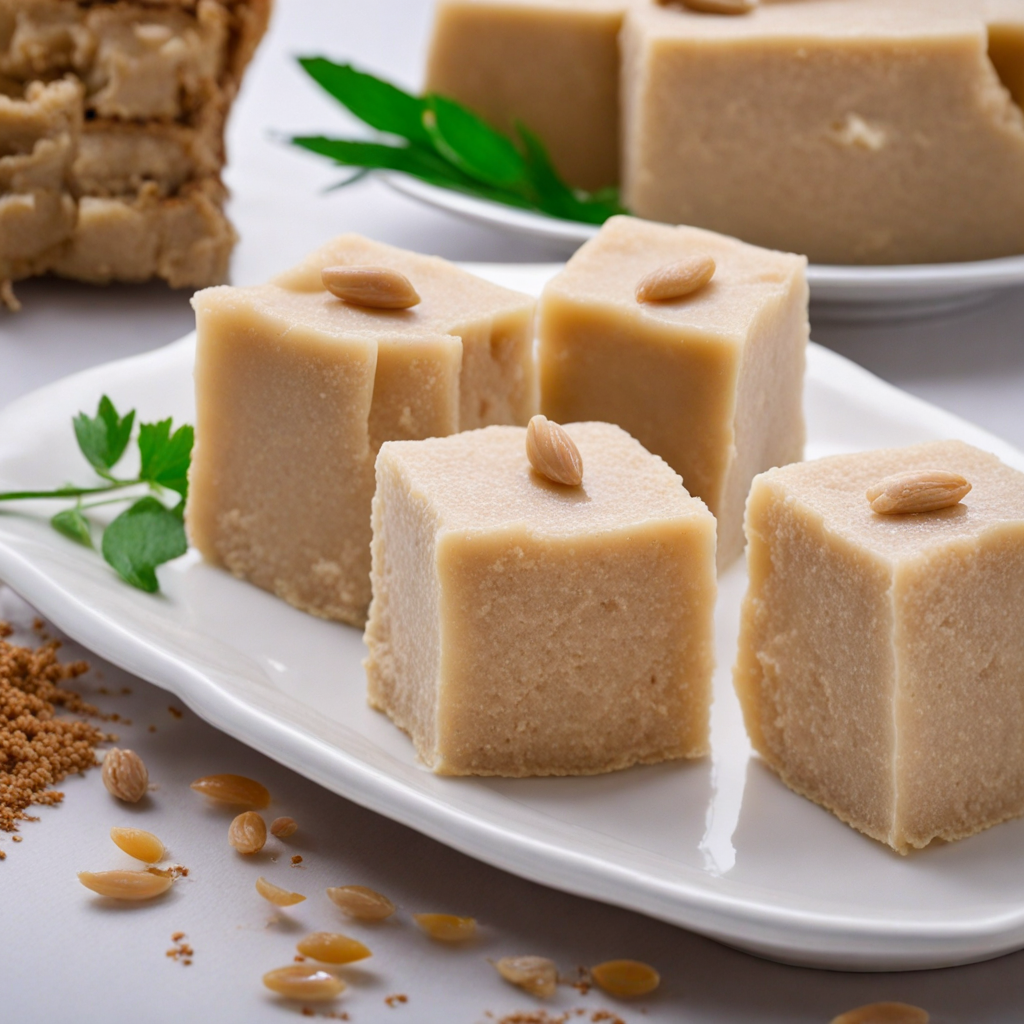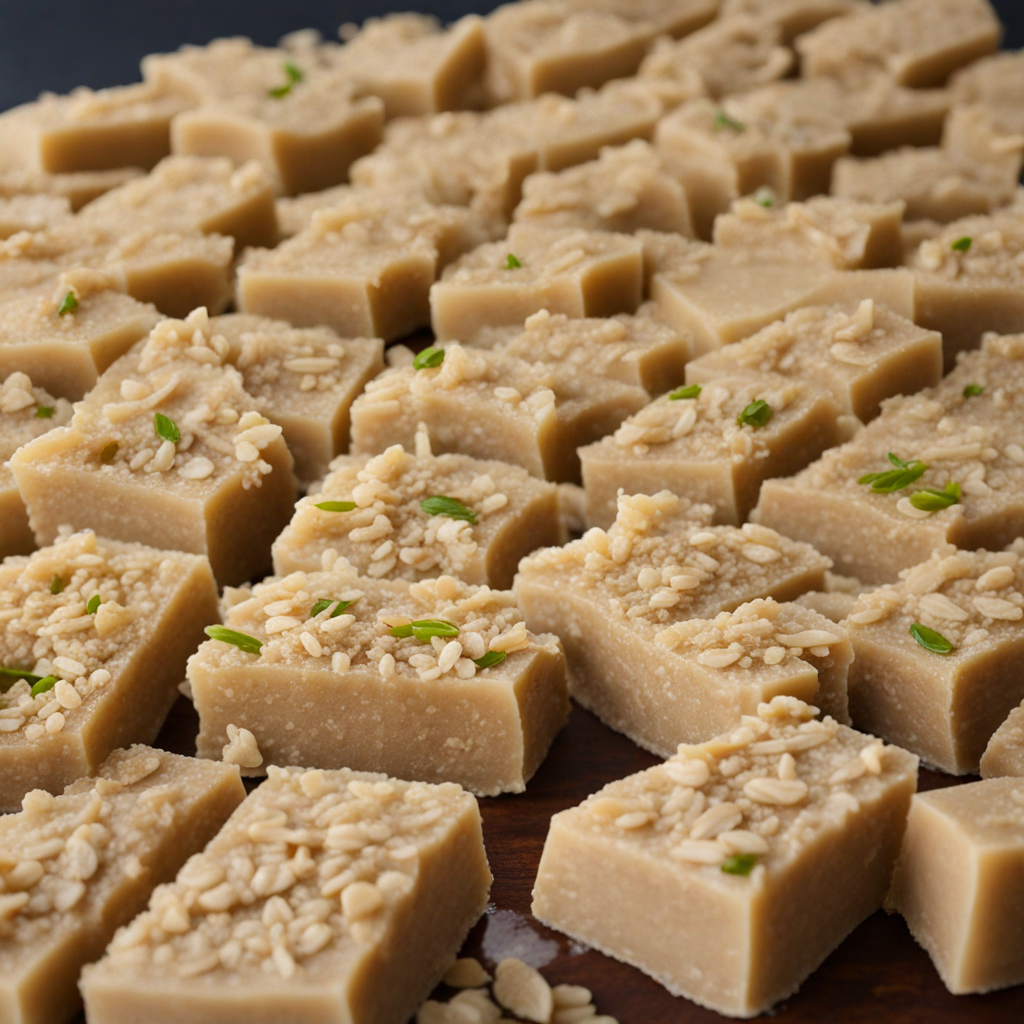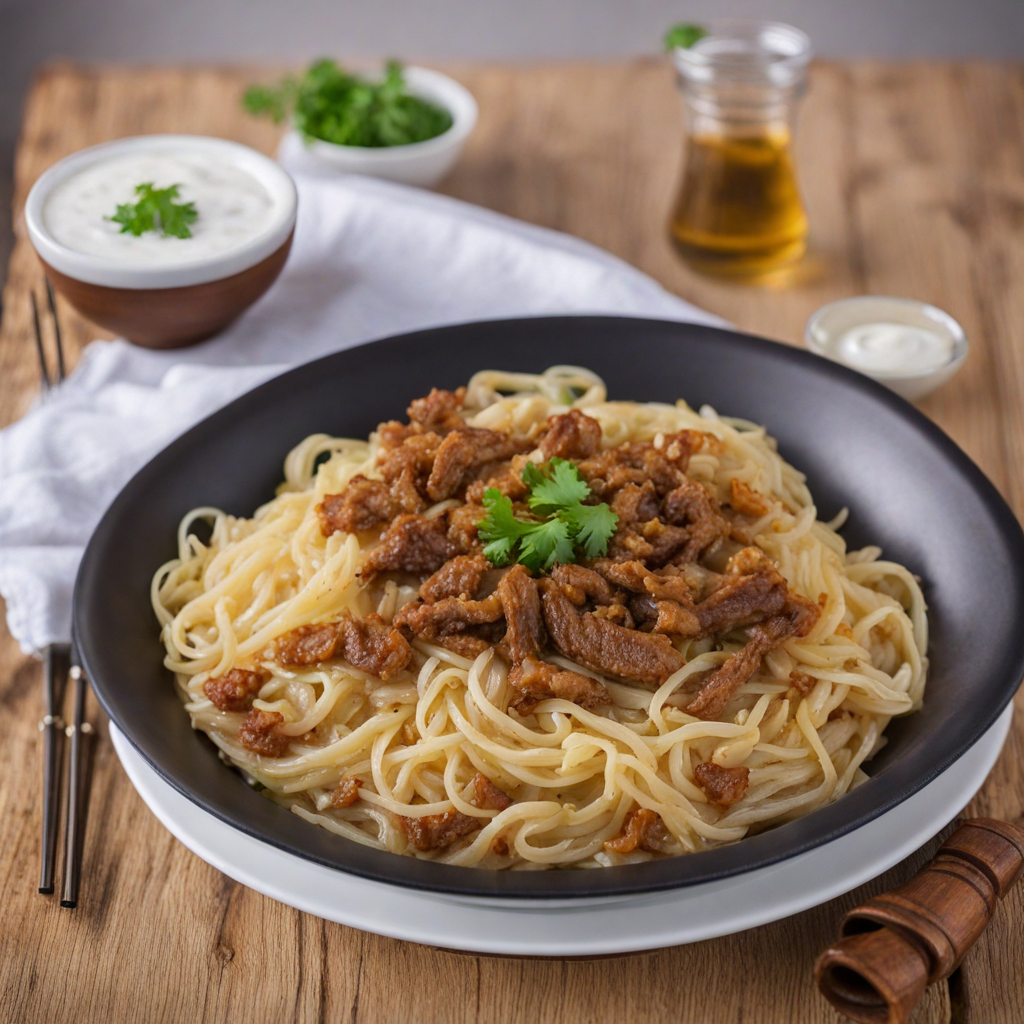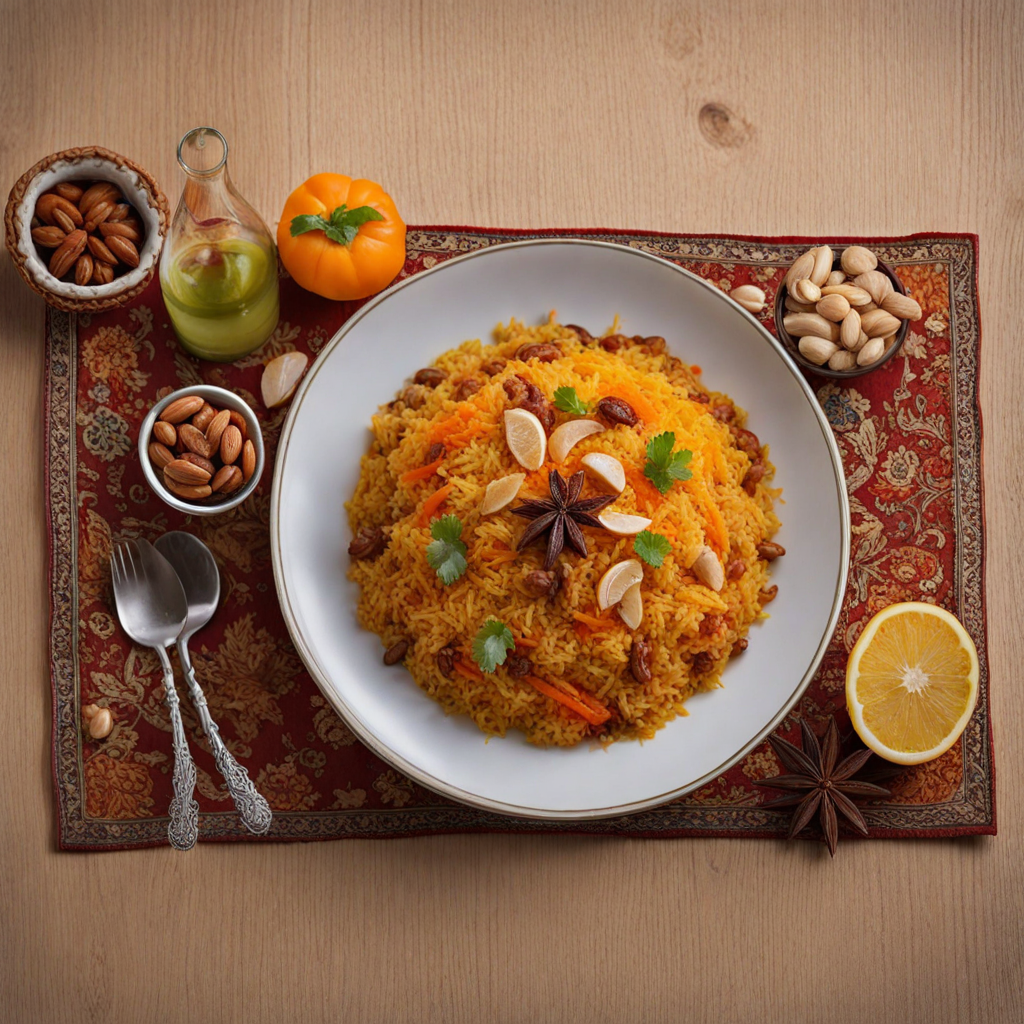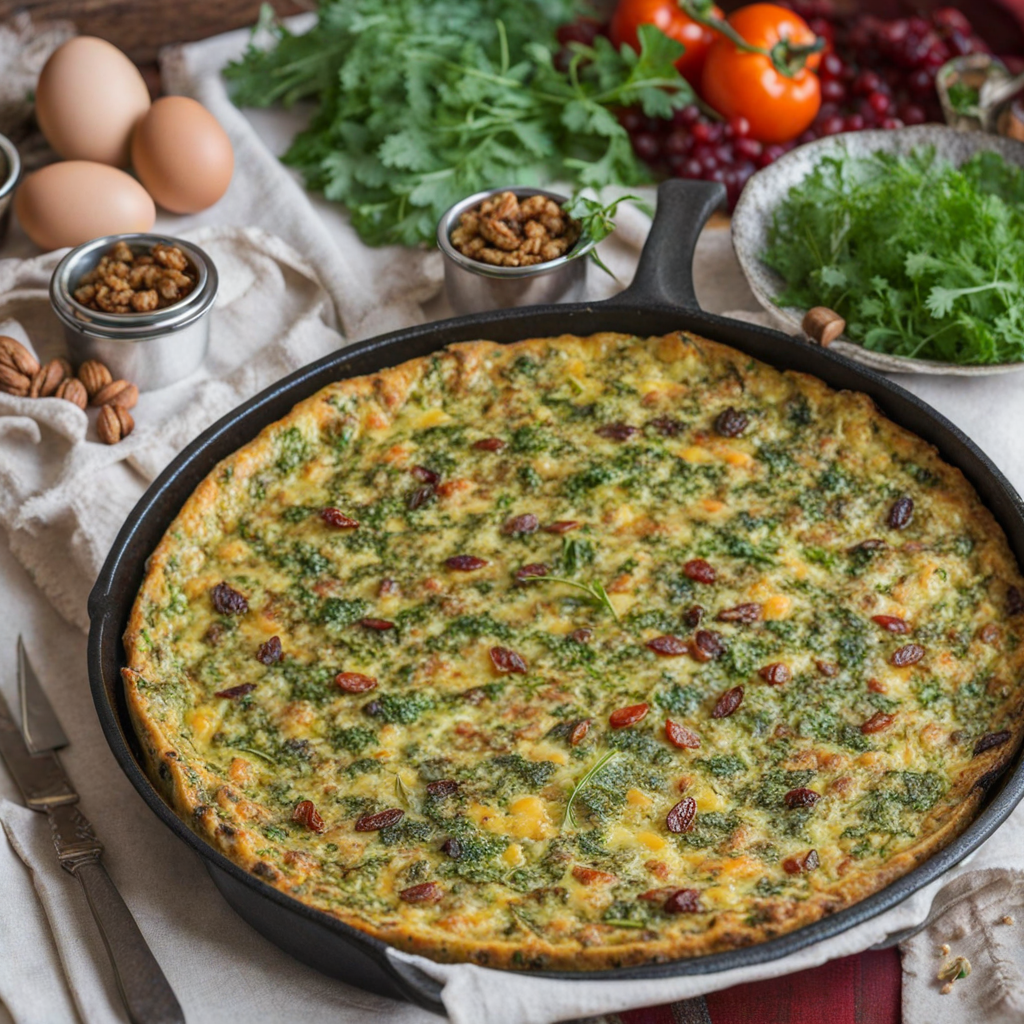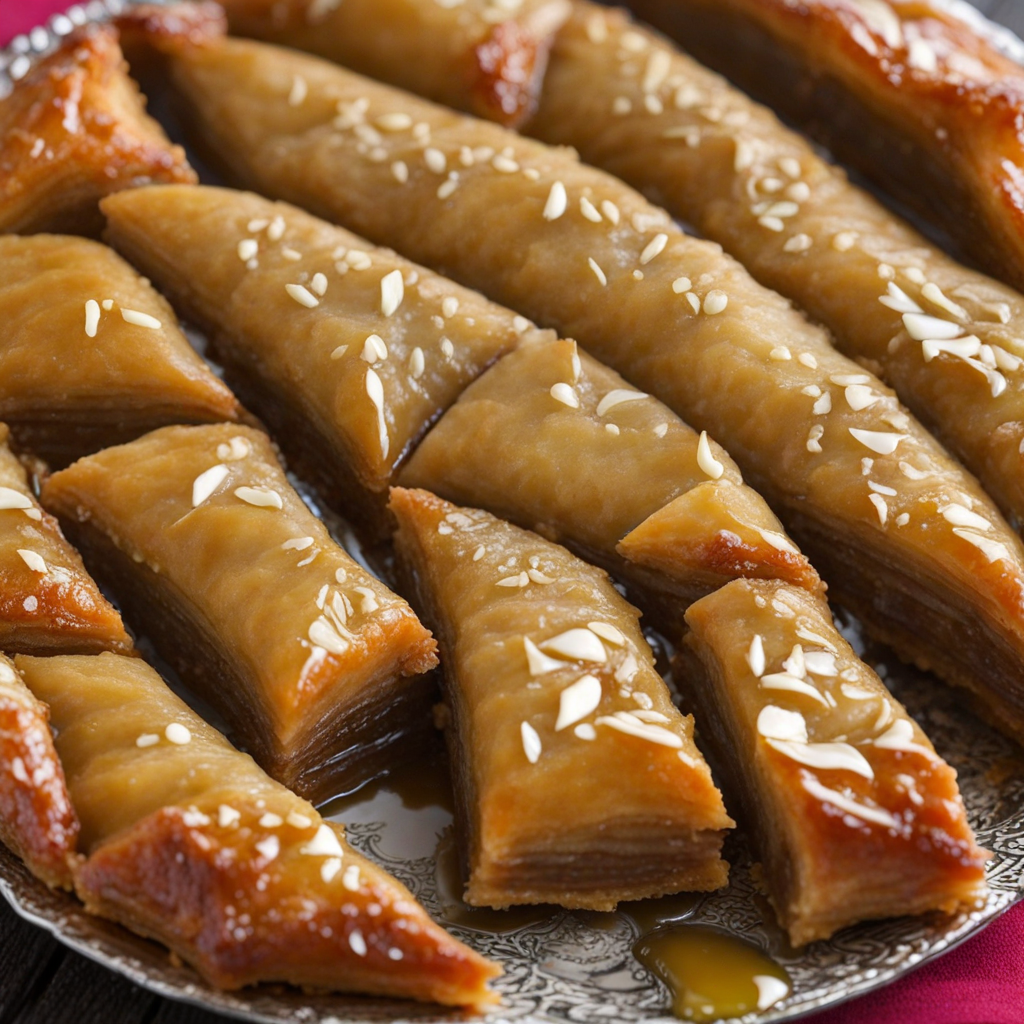Samani Halva
'سمانی حلوا' (Samani Halva) is a traditional Azerbaijani dessert that holds a cherished place in the culinary heritage of the region. This dish is particularly significant during the Novruz holiday, which celebrates the arrival of spring and the Persian New Year. Samani Halva is often associated with the celebration of new beginnings, symbolizing fertility and growth, as it is made from sprouted wheat, known as 'samani.' The dish not only serves as a delicacy but also as a cultural emblem that reflects the values and traditions of Azerbaijani society. Historically, Samani Halva can be traced back to ancient Persia, where the practice of sprouting wheat was believed to bring good fortune and prosperity. Over time, this practice was adopted and adapted in various regions, evolving into a sweet dish that became integral to Novruz festivities. The preparation of Samani Halva is steeped in ritual, often involving family and community participation, thereby reinforcing social bonds and cultural identity. It is not merely a food item but an experience that encapsulates the spirit of togetherness and celebration. The flavor profile of Samani Halva is unique and delightful. It presents a harmonious blend of natural sweetness and rich, nutty undertones. The primary ingredient, sprouted wheat, provides a subtle earthy taste, while the addition of sugar and sometimes honey elevates the overall sweetness. Spices such as cardamom or cinnamon may be incorporated to add warmth and depth, creating a
How It Became This Dish
The Delicious Journey of Samanı Halva: A Culinary Treasure from Azerbaijan #### Origins of Samanı Halva Samanı Halva, a traditional Azerbaijani sweet dish, is a delightful confection that holds a special place in the heart of Azerbaijani culture and cuisine. Its primary ingredient, samani (sprouted wheat), is deeply symbolic, representing rebirth and renewal. The practice of sprouting wheat dates back thousands of years, making it not only a staple food but also a significant cultural symbol in many agrarian societies, including Azerbaijan. The origins of Samanı Halva can be traced back to ancient agricultural practices in the region, where the fertility of the land and the life cycle of crops were celebrated. The dish is traditionally prepared during the holiday of Novruz, the Persian New Year, which marks the arrival of spring and symbolizes the rejuvenation of nature. Novruz, celebrated on the vernal equinox, has roots that extend into Zoroastrianism, intertwining the celebration of the earth's rebirth with the culinary rituals of the people. #### Cultural Significance Samanı Halva is more than just a sweet treat; it embodies the spirit of togetherness and the essence of Azerbaijani hospitality. During Novruz, families gather to prepare and share this dish, reinforcing communal bonds and cultural identity. The act of making Samanı Halva is often a communal affair, where family members come together, each contributing to the preparation, thereby passing down traditions and recipes through generations. The dish is typically served alongside other Novruz treats, such as baklava, shekerbura (sweet pastries filled with nuts), and various herbal teas. Its presence on the festive table is a reminder of the importance of grains and agriculture in Azerbaijani life. The sprouted wheat used in Samanı Halva symbolizes growth, prosperity, and good fortune, making it a fitting dish for the celebration of life and renewal. #### Ingredients and Preparation The preparation of Samanı Halva is a meticulous process that transforms simple ingredients into a delightful delicacy. The primary components include sprouted wheat, sugar, butter, and sometimes nuts and spices for added flavor. Each ingredient carries its own significance; for instance, the use of sugar represents sweetness in life, while nuts symbolize abundance. To prepare Samanı Halva, the wheat is first soaked in water and allowed to sprout for several days. Once sprouted, the wheat is ground into a fine paste. This paste is then mixed with butter and sugar and cooked over low heat until it thickens and takes on a rich, golden color. The halva is often garnished with toasted nuts or a sprinkle of cinnamon, enhancing its flavor and presentation. The dish is traditionally shaped into decorative forms, often using special molds that reflect cultural motifs, making it not only a treat for the palate but also a feast for the eyes. The process of making Samanı Halva can be labor-intensive, reflecting the care and dedication that goes into preparing food for loved ones. #### Historical Development Over the centuries, Samanı Halva has evolved, influenced by various cultures and historical events in Azerbaijan. The region, situated at the crossroads of Europe and Asia, has seen a confluence of culinary traditions. Persian, Ottoman, and Russian influences have all left their mark on Azerbaijani cuisine, and Samanı Halva has adapted accordingly. In the early 20th century, as Azerbaijan underwent significant political and social changes, the role of food in cultural identity became even more pronounced. Samanı Halva was not merely a festive dish but a symbol of national pride and resilience. During periods of hardship, such as the Soviet era, traditional foods like Samanı Halva became a means of preserving cultural heritage amidst attempts to homogenize local customs. In the post-Soviet era, Azerbaijan experienced a resurgence of interest in its culinary roots. Samanı Halva began to reemerge as a cherished dish, celebrated not just during Novruz but throughout the year. Chefs and home cooks alike took pride in mastering the art of halva-making, experimenting with flavors and presentations while honoring traditional methods. This period marked a revival of interest in local ingredients and culinary techniques, reinforcing the importance of Samanı Halva as a symbol of Azerbaijani identity. #### Modern Interpretations Today, Samanı Halva continues to be a beloved dessert, both in Azerbaijan and among the Azerbaijani diaspora around the world. Its preparation is often accompanied by stories of family traditions and memories of past celebrations, making it a nostalgic reminder of home for many. While traditional recipes remain popular, modern interpretations have also emerged, incorporating contemporary twists. Contemporary chefs experiment with flavors, incorporating ingredients like cardamom, vanilla, or even chocolate. Some variations include the addition of fruits or the use of alternative sweeteners, catering to diverse dietary preferences. However, the essence of Samanı Halva remains unchanged: it is still a dish that embodies love, tradition, and community. Samanı Halva has also gained recognition beyond Azerbaijani borders, featured in international food festivals and culinary events. As global interest in traditional foods grows, Samanı Halva stands out as a representation of the rich culinary tapestry of Azerbaijan, inviting food enthusiasts to explore its flavors and cultural significance. #### Conclusion Samanı Halva is a testament to the resilience of Azerbaijani culture, a dish that has not only survived the passage of time but has also thrived amidst changing social landscapes. Its roots in agricultural practices, coupled with its deep cultural significance during Novruz, make it a dish worth celebrating. As Azerbaijan continues to embrace its culinary heritage, Samanı Halva will undoubtedly remain a cherished symbol of the nation’s identity, a sweet reminder of the importance of tradition, togetherness, and the joy of sharing food with loved ones. Through every sprouted grain and every lovingly crafted piece of halva, Samanı Halva tells a story—a story of a people, their history, and their enduring love for the land they call home.
You may like
Discover local flavors from Azerbaijan


